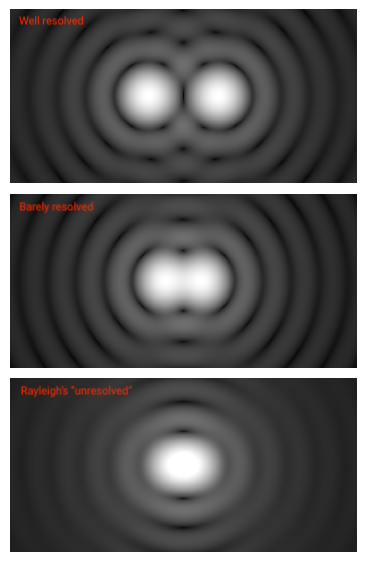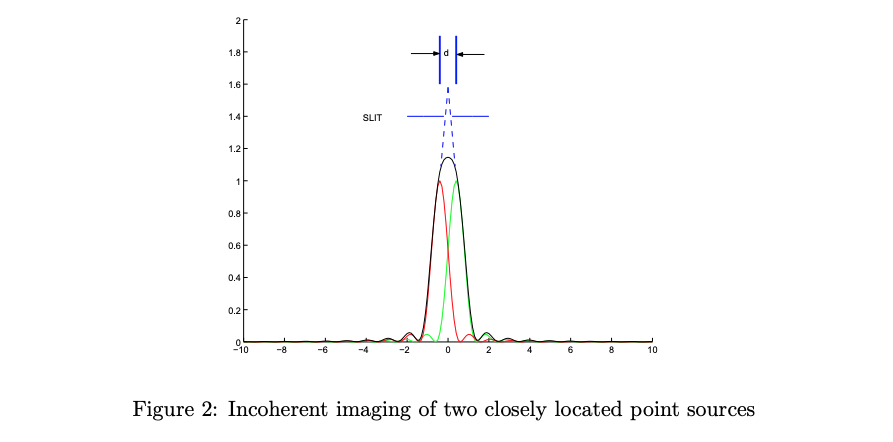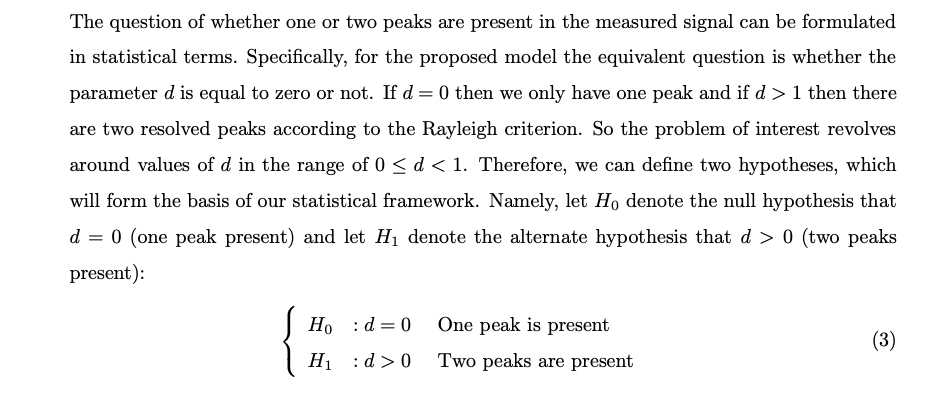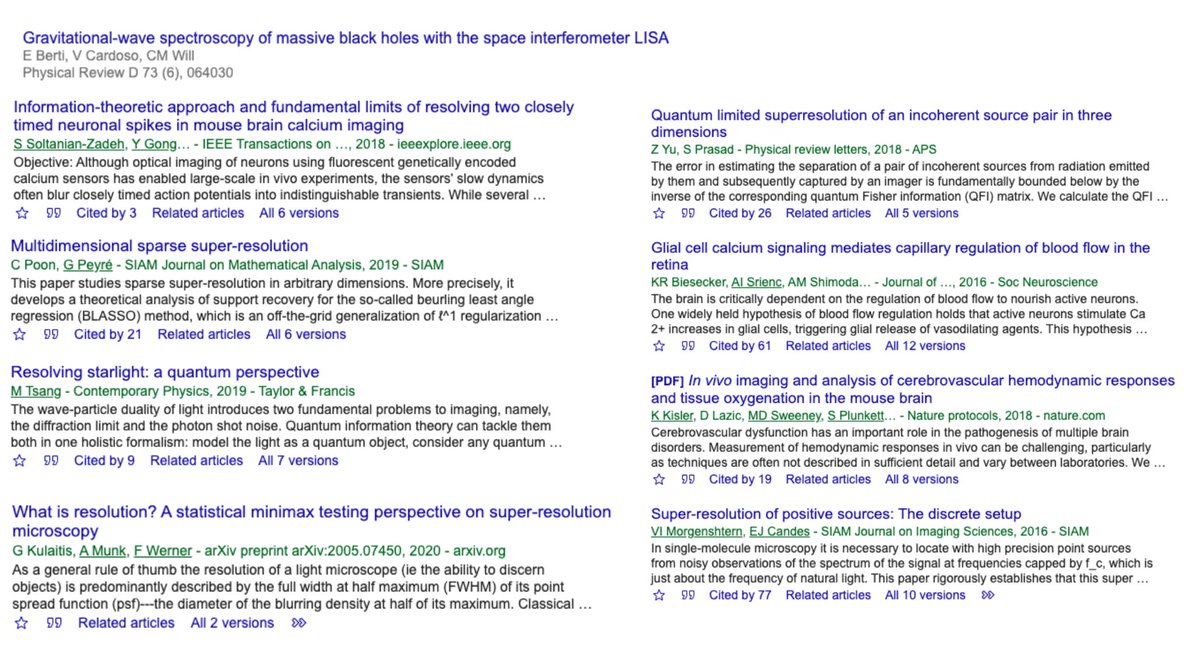1/4 It may come as a surprise to some that Rayleigh& #39;s limit to resolution is just a rule of thumb - not a physical law:
"two point sources are regarded as just resolved when the maximum of the Airy disk (PSF) of one source coincides with the first minimum of the PSF of the other"
"two point sources are regarded as just resolved when the maximum of the Airy disk (PSF) of one source coincides with the first minimum of the PSF of the other"
2/4 Rayleigh& #39;s criterion just says that we can& #39;t eyeball two sources if they& #39;re too close. But this doesn& #39;t mean we can& #39;t *detect* 1 vs. 2 or more sources statistically even in the presence of noise. With proper tests, we can find very weak signals fully hidden to the naked eye.
3/4 The punchline: ability to resolve two nearby sources follows a power law. Plot shows the min detectable separation between two equal brightness sources as a function of SNR w/ & w/o aliasing given N uniform samples.
Formula: required SNR = c/(N*d^4)
https://ieeexplore.ieee.org/document/1288193">https://ieeexplore.ieee.org/document/...
Formula: required SNR = c/(N*d^4)
https://ieeexplore.ieee.org/document/1288193">https://ieeexplore.ieee.org/document/...

 Read on Twitter
Read on Twitter






